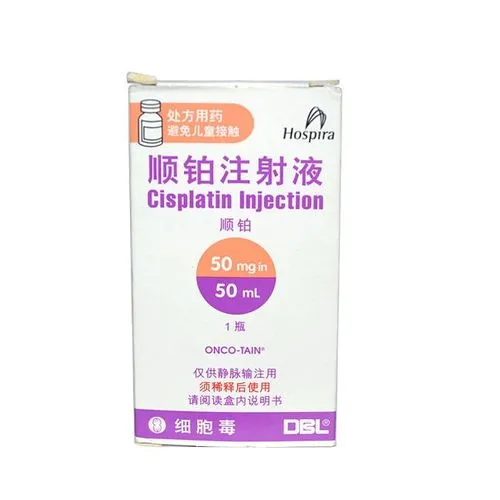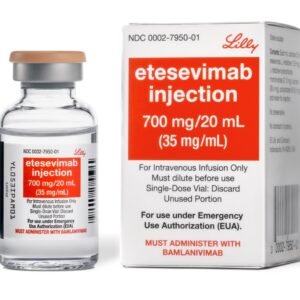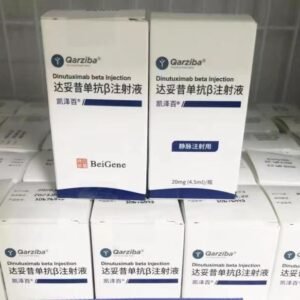Cisplatin Injection.
Effects and efficacy:
Cisplatin is generally used to treat small cell and non-small cell lung cancer, testicular cancer, ovarian cancer, cervical cancer, endometrial cancer, prostate cancer, bladder cancer, melanoma, sarcoma, head and neck tumors, various squamous cell carcinomas and malignant lymphomas.
Usage and dosage:
Cisplatin can only be administered intravenously, intraarterially or intracavitary. It is usually administered by intravenous drip. Adequate hydration therapy is required 2 to 16 hours before administration and at least 6 hours after administration. Cisplatin needs to be diluted with normal saline or 5% glucose solution and then dripped intravenously. The dosage depends on the chemotherapy effect and individual response. The following dosage is for reference (for adults and children): The course of treatment depends on the clinical efficacy and is repeated every 3-4 weeks. Cisplatin can be used in combination with other anticancer drugs or alone. When used in combination, the dosage needs to be adjusted appropriately with the course of treatment.
Adverse reactions:
Nephrotoxicity After a single medium or high dose of medication, mild, reversible renal dysfunction may occasionally occur, and trace hematuria may occur. Repeated high-dose and short-term repeated use of the drug can cause irreversible renal dysfunction. In severe cases, renal tubular necrosis can lead to anuria and uremia. Digestive system symptoms include nausea, vomiting, loss of appetite, and diarrhea. The reactions usually occur within 1 to 6 hours after administration, and the longest does not exceed 24 to 48 hours. Occasionally, liver dysfunction and increased serum transaminases can be seen, which can be restored after drug withdrawal. The hematopoietic system is manifested by a decrease in white blood cells and (or) platelets, which is generally related to the dosage of the drug. Bone marrow suppression generally reaches a peak in about 3 weeks and recovers in 4 to 6 weeks. Ototoxicity can cause tinnitus and high-frequency hearing loss, which are mostly reversible and do not require special treatment. Neurotoxicity is more common in patients with a total amount of more than 300 mg/m2. Peripheral nerve damage is common, manifested as ataxia, myalgia, and paresthesia of the upper and lower limbs. A small number of patients may experience brain dysfunction, and epilepsy and retrobulbar neuritis may also occur. Allergic reactions such as increased heart rate, decreased blood pressure, dyspnea, facial edema, and allergic fever reactions may all occur. Other hyperuricemia: Leg swelling and joint pain are common. Plasma electrolyte disorders: hypomagnesemia, hypocalcemia, muscle cramps. Cardiac toxicity: Rare arrhythmias, electrocardiogram changes, bradycardia or tachycardia, heart failure, etc. Immune system: Immunosuppressive reactions may occur. Gingival changes: Platinum metal deposits may appear on the gums. Patients may experience local swelling of the limbs where arterial or intravenous injections are given. Pain, erythema and skin ulcers, local phlebitis, etc. are rare. Hair loss, sperm and egg formation disorders, and male breast feminization may also occur. The occurrence of secondary non-lymphocytic leukemia is related to the use of cisplatin chemotherapy. Vascular lesions, such as cerebral ischemia, coronary artery ischemia, peripheral vascular disorders similar to Ravnaud syndrome, and other side effects are rare, but may be related to the use of cisplatin.
Drug contraindications:
Contraindicated during lactation, contraindicated during pregnancy, and contraindicated for allergies to this product
Share:
Products
Our offers
Health Classification
Let us work together to protect precious health



























